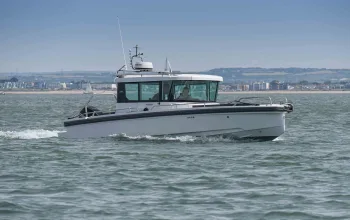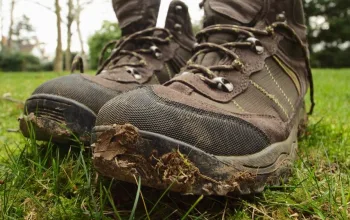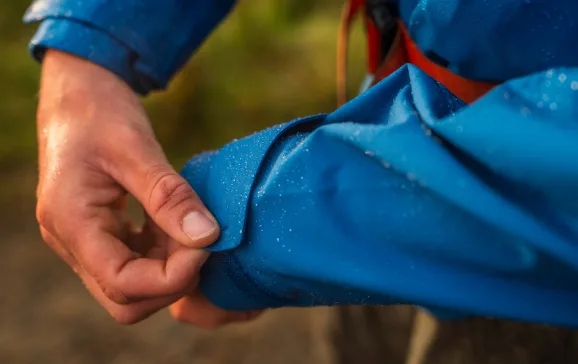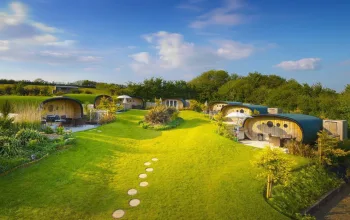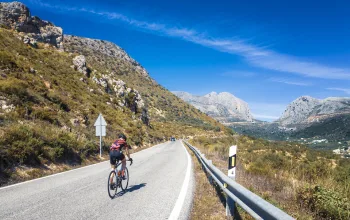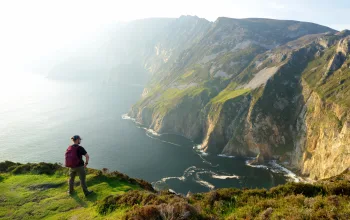Off the motorway, following my route planner, I drive into glorious countryside and make my way to the London Gliding Club. Adrian, a volunteer instructor who has been gliding for ten years, warmly greets me. He immediately takes me off to what’s clearly the hub of all operations – the cafeteria. After a chat we then drive to the launch base where Dan, my instructor for the day, begins to prep me on all I need to know. Dan, who is 20, did his first solo flight at 18 after joining the club’s cadet scheme.
Going through all the theory of how everything works, and what to do once airborne, seems pretty simple. I’m not altogether too keen on the emergency call of action if something goes wrong though –release the canopy and safety belts and jump. At least I’m wearing a parachute!
The glider is connected by rope to a light aircraft and we’re ‘aerotowed’ up into the air. A bumpy start along the field and we’re off and up. Lots of ‘whoa, ooo, ahhhh’ noises are coming from me as my stomach does somersaults. Once we’re towed to around 1,500 feet, the rope is detached with a clunk from the underside of the glider and we’re free. It’s a strange feeling – there’s a sense of safety when the rope is attached to the aeroplane, and once it goes, I feel I want to hold onto something in case we start plummeting to the ground. ‘I am in control’, Dan tells me. He’s not attempting to be heroic; this is glider talk. ‘You are in control,’ I respond. Thankfully I’m not or I doubt we’d be swooping through the peaceful skies so smoothly and effortlessly. Something you notice straight away is the lack of engine, which results in an eerie silence.
The weather conditions aren’t ideal, as it’s an all-too-familiar grey English day. It doesn’t make a jot of difference to the experience for me, but I’m told that with perfect weather conditions of a clear windy day and lots of cumulus clouds, we’d be able to catch the thermals and rise, staying up in the air for longer. It’s possible to glide as far Scotland and back again with the right conditions!
In a glider both pilot and passenger have a set of controls, so either person can take control. The passenger can also ‘follow through’ with the controls, basically lightly touching all their own controls and feeling what the pilot is doing. This is what I’ve been doing so far, so when Dan tells me ‘You are in control’ and I repeat ‘I am in control’, I’m glad he can’t see the terror in my face. After some jumpy manoeuvres to keep the glider at ‘normal gliding attitude’, where the horizon remains at a constant level, I’m just getting into the swing of it when Dan regains control to bring us in for landing.
Unlike an aeroplane, there’s no engine roar and landing a glider is much calmer. You descend and approach the landing area, deploying the spoilers (flaps on the wings) to weaken the air flow, and ease the glider lower until the wheels make contact and you’re gently bumping along the field.
Continued...
 Once safely stopped, we jump out and attach the front of the glider to a quad bike that has come to retrieve us and walk it back to launch base. I absolutely loved it and can’t wait to get back up in the air. For Round Two however, we’re going up by a winch system. To watch a glider going up by winch is really exciting. To be in the glider going up by winch is pretty terrifying. A rope is attached to the glider, and at the opposite end of the rope, across an enormous field, the winch is activated. The slack rope is suddenly pulled taut and in 2.5 seconds you’ve gone from 0-60 miles per hour and you’re shooting through the air at a 130-degree angle until you reach around 1,000 feet, where you’re released.
Once safely stopped, we jump out and attach the front of the glider to a quad bike that has come to retrieve us and walk it back to launch base. I absolutely loved it and can’t wait to get back up in the air. For Round Two however, we’re going up by a winch system. To watch a glider going up by winch is really exciting. To be in the glider going up by winch is pretty terrifying. A rope is attached to the glider, and at the opposite end of the rope, across an enormous field, the winch is activated. The slack rope is suddenly pulled taut and in 2.5 seconds you’ve gone from 0-60 miles per hour and you’re shooting through the air at a 130-degree angle until you reach around 1,000 feet, where you’re released.
‘I like it when people scream’ were Dan’s words on the ground. I don’t scream as we’re making our speedy ascent, but I am fiercely gripping my parachute straps. Once we’re up and flying around, Dan ‘stalls’ the glider for me, to illustrate the feeling. It’s like stalling a car, the only difference being that there’s no way of knowing by the sound of the engine, it’s just the feeling of suddenly not moving, like a jolt. A quick dip of the nose and we pick up speed and we’re jump-started.
After a cup of tea, bacon buttie and meeting some of the regulars, I realise how this could become more-ish. Adrian is describing a loop-the-loop he’d done the day before and suggests I might like to do one. I open my mouth before engaging my brain and give a quick and affirmative response. The next thing I know I’m back in the glider with Adrian sitting behind me and we’re being aerotowed up. Before we release the rope Adrian tells me that it’s too cloudy for acrobatics, and relief washes over me. But then Adrian receives a message through the intercom system to say that there’s a patch of clear sky. Suddenly we’re in it and I’m told to brace myself. And then, without any further warning, we’re plummeting towards the ground picking up speed. There are a few expletives coming from me at this point and then we loop. What a feeling – better than any rollercoaster. I’ve completely lost my stomach somewhere above us, but I’m so glad we did it and pleased the decision wasn’t actually left up to me or I might have chickened out.
Before the end of the day I’m introduced to Helen, who’s just completed her first solo flight after six days of training. She describes her experience of gliding as ‘amazing, peaceful and relaxing’. I couldn’t put it better myself – well, at least when Dan or Adrian have control. I need a bit more practice...
In the know
A day’s course tandem gliding at the London Gliding Club costs around £180.
At least three aerotows are included, as well as lunch, a logbook and a three-month membership of the club.
All Images: Adrian Hobbs



 Go Gliding
Go Gliding


